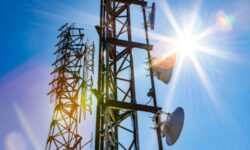Are You Up to Date on These Recent Changes to Alarm Notification Requirements?
There have been several changes over the past few years in regards to notification appliances. Fire-safety expert Shane Clary brings you up to speed.

This month we’re dealing with notification appliances. There have been several changes over the past few years that, depending on the edition of NFPA 72, “National Alarm and Signaling Code,” and the two fire codes (NFPA 1 and the International Fire Code) being used within your jurisdictions, you may or may not have noticed.
However, the basic concept of providing notification within a protected premises has not changed over the course of several editions of NFPA 72. The system still must produce a sound pressure level over the existing ambient level by a prescribed amount. This can either be in the public or private mode.
With public, it is for all who may be within the occupancy while for private, it is to those who are responsible for alerting the occupants of an alarm.
Sounders Move Toward 520Hz Frequency Tone
Through research that was conducted in Australia and New Zealand, it was found that various members of the population, such as the very young or elderly or those who may be a bit overcome by drugs or alcohol, may not respond to the standard 3,000Hz tone that is produced but rather a tone of 520Hz more commonly initiated response.
Within the 2016 edition of NFPA 72 is the following requirement for residential occupancies:
18.4.5.3 Audible appliances provided for the sleeping areas to awaken occupants shall produce a low frequency alarm signal that complies with the following:
(1) The alarm signal shall be a square wave or provide equivalent awakening ability.
(2) The waveform shall have a fundamental frequency of 520Hz ± 10 percent.
(3) The notification equipment shall be listed for producing the low frequency waveform.
This provision applies not only to a single-family residence, but to hotels, motels, apartments, condominiums and other multiresidential occupancies. A number of jurisdictions are requiring that these be installed retroactively.
One I work with, the San Francisco Fire Department, has through an ordinance made this a requirement in all apartments and condos by July 2021. While this is for fire alarm systems, the requirement that UL 217 smoke alarms produce the 520Hz tone is still a few years off.
To produce the lower frequency sound, a higher current is required. This can be accomplished on a system that uses notification appliance circuits from a 24VDC output with a larger standby reserve, but has been difficult when the only standby power source is the backup battery within a smoke alarm.
Progress is being made though.While not a smoke alarm, CWSI, a division of Johnson Controls, has a 520Hz battery-powered, wireless sounder that is now on the market. This product can only be used with the front end CWSI control. This is a sounder only. The current requirements for strobes are still being worked on by a number of manufacturers.
LEDs Make Impact on Visual Notifications
Since the last code cycle of NFPA 72, the use of LEDs has been allowed. Several manufacturers now produce LED strobes as opposed to the xenon tube types.
With the xenon tube and LED, the end rush current is being reduced, and shows the promise of being reduced even further. This will yield battery-powered ADA (Americans with Disabilities Act) compliant strobes as well as those that can be powered from a signaling line circuit (SLC).
The powering of beacons in Europe is already occurring through the SLC, but the candela rating of these appliances is not as great as those of appliances that are required to meet the ADA standards within the United States.
Regarding the use of LEDs for visible notification, the following requirement is found within the 2016 edition of 72:
18.5.3.2 The maximum light pulse duration shall be 20 milliseconds with a maximum duty cycle of 40 percent. Exception: Lights used to meet the requirements of 18.5.5.5 shall be permitted to be listed and labeled to have pulse durations up to 100 milliseconds.
Paragraph 18.5.5.5 covers corridors. The annex material to 18.5.3.2 provides additional guidelines on pulse durations:
New research using lights with longer pulse durations shows that the existing tables for indirect signaling [Table 18.5.5.4.1(a) and Table 18.5.5.4.1(b)] are inadequate to assure reliable notification. Until additional work is done and incorporated into this Code, lights used for indirect signaling and having effective intensities specified in Table 18.5.5.4.1(a) or Table 18.5.5.4.1(b) need to be short duration, high intensity to be effective for the specified area of coverage. This limitation does not apply to direct signaling such as that used in corridors in accordance with 18.5.5.5. …
The big issue with original LED strobes was light pulse duration. This has been resolved with many products. Still, installers should verify duration before using LED strobes.
If you enjoyed this article and want to receive more valuable industry content like this, click here to sign up for our FREE digital newsletters!

Security Is Our Business, Too
For professionals who recommend, buy and install all types of electronic security equipment, a free subscription to Commercial Integrator + Security Sales & Integration is like having a consultant on call. You’ll find an ideal balance of technology and business coverage, with installation tips and techniques for products and updates on how to add to your bottom line.
A FREE subscription to the top resource for security and integration industry will prove to be invaluable.














